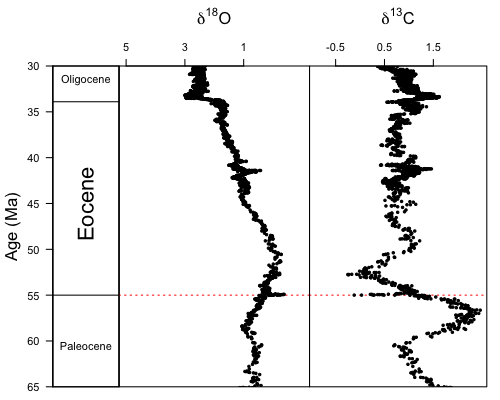The Paleocene-Eocene Thermal Maximum (PETM) is a well-studied warming event near the Paleocene-Eocene boundary.
It is characterized by its extreme warming rate: from onset to recovery the event lasted ca. 100 kyrs, and the global temperature is thought to have increased by ~6 °C in barely 20 kyrs.
This event is of particular interest not only for its $\delta^{18}\rm O$ but also a sharp negative excursion in the $\delta^{13}\rm C$, implying a strong input of $^{13}\rm C$-depleted carbon into the system.

Simplified and redrawn after Zachos et al. 2001
One frequently invoked hypothesis to explain this input is the leakage of methane from clathrates trapped in seafloor sediments.
Being a paleontologist and not a geochemist, I struggle to understand the actual chemical mechanism involved.
I was thus wondering if someone could explain the mechanisms allowing the destabilization of methane clathrates at the same time on a global scale.
If it's just linked to a temperature threshold, how come it wasn't reach prior to that (warmer temperature were reached during the Cretaceous)?